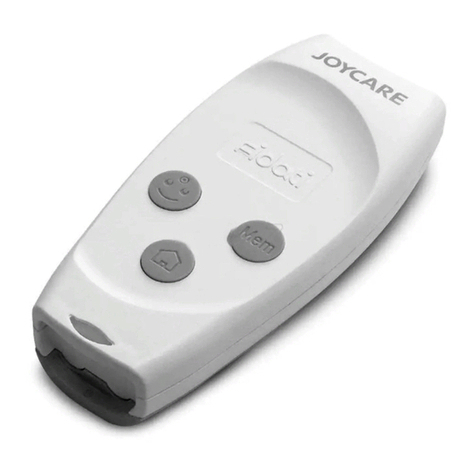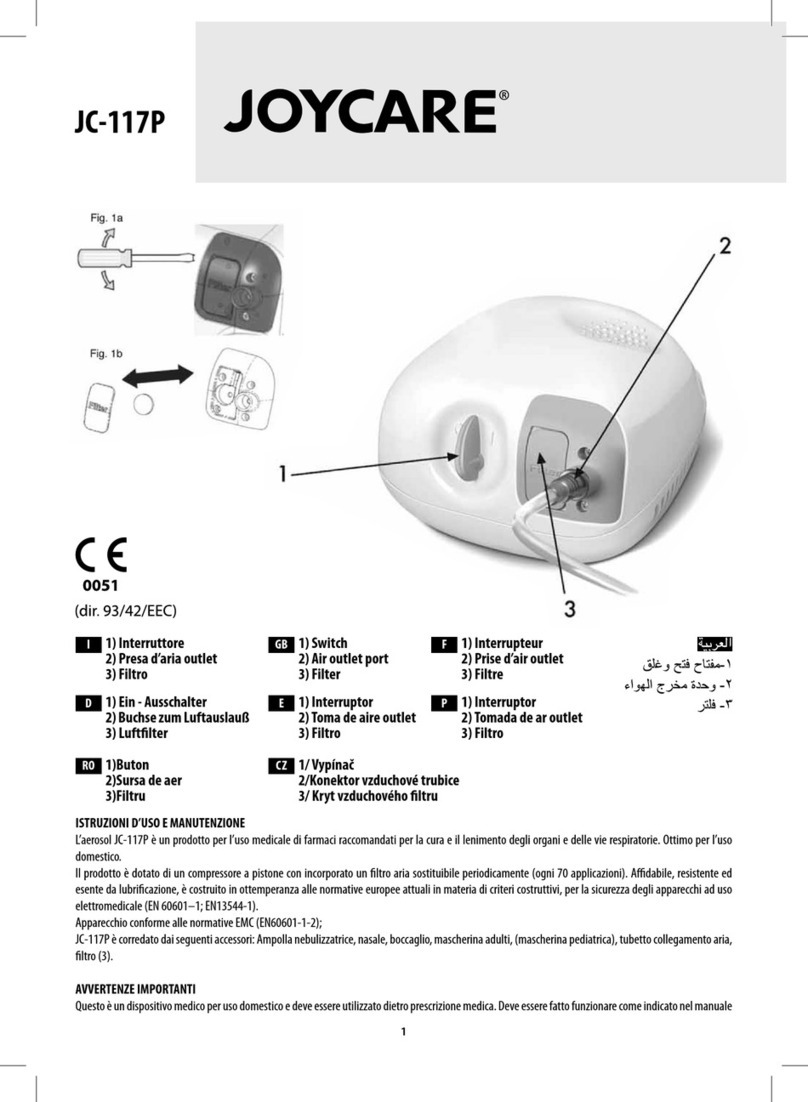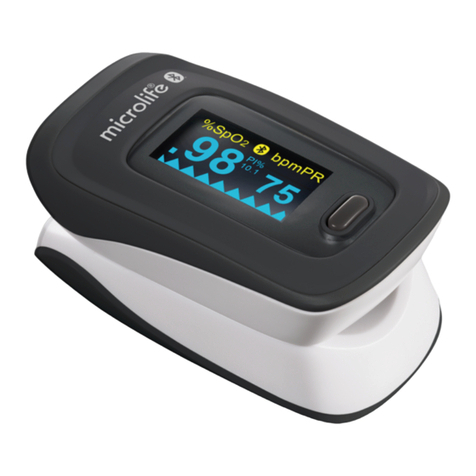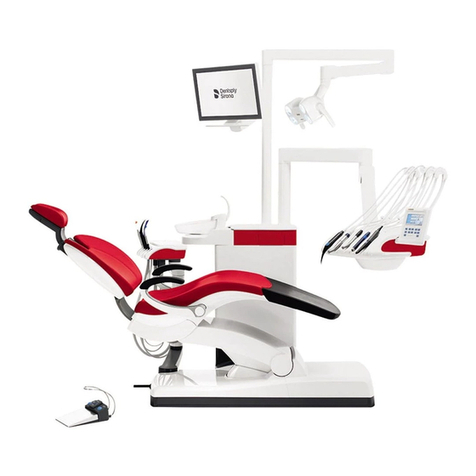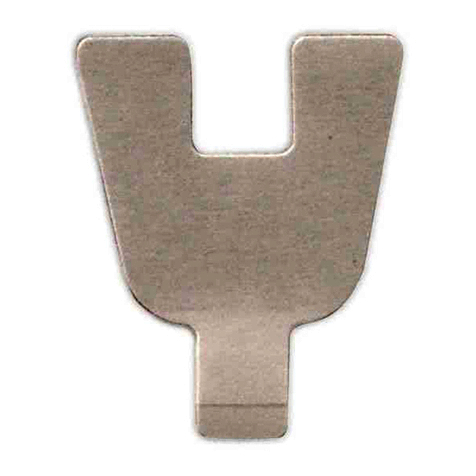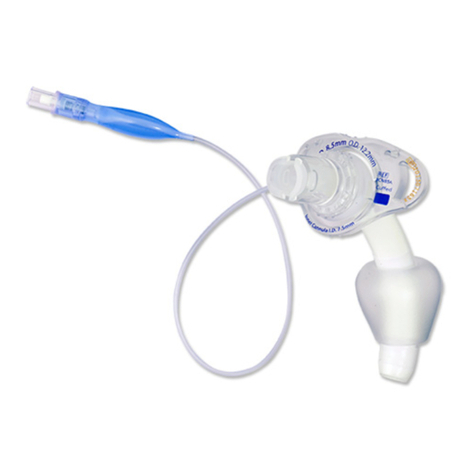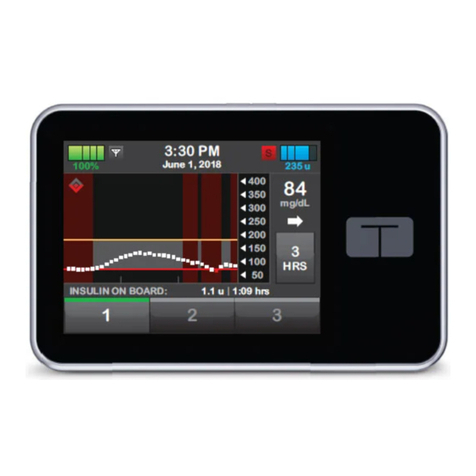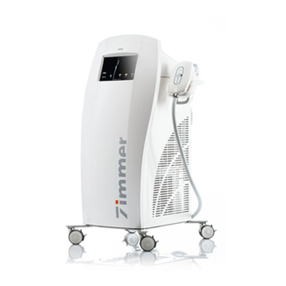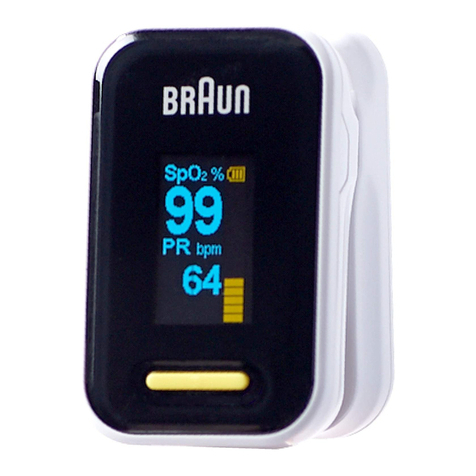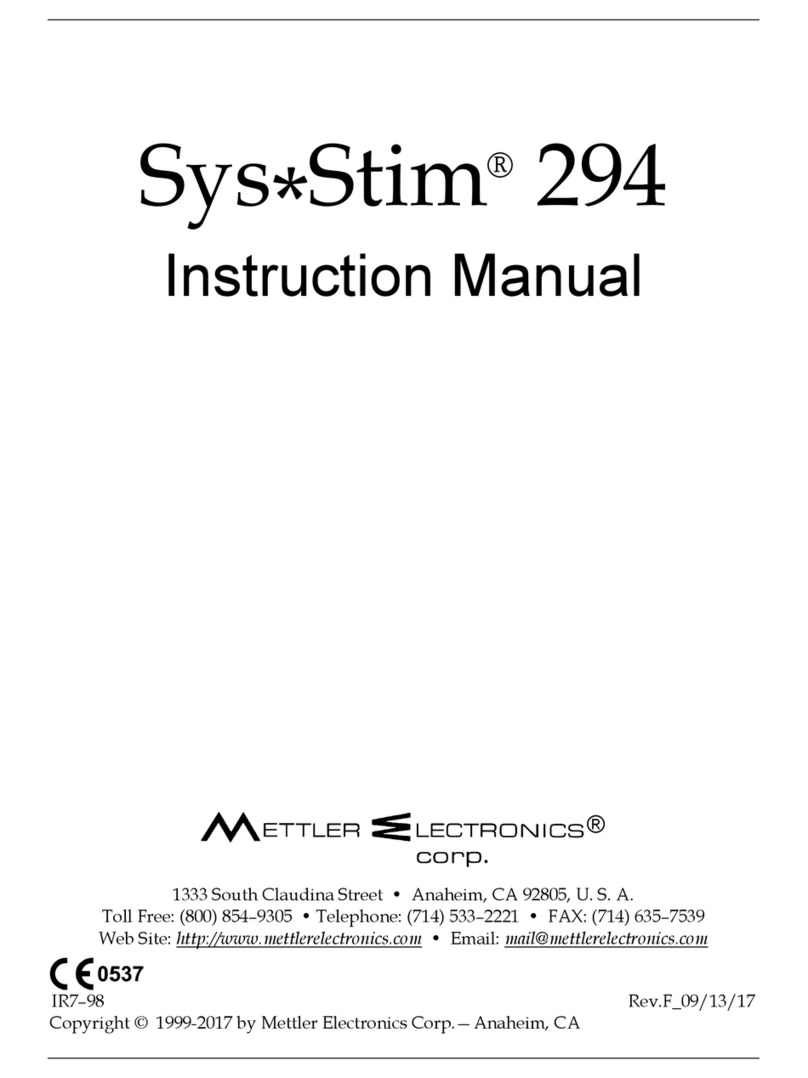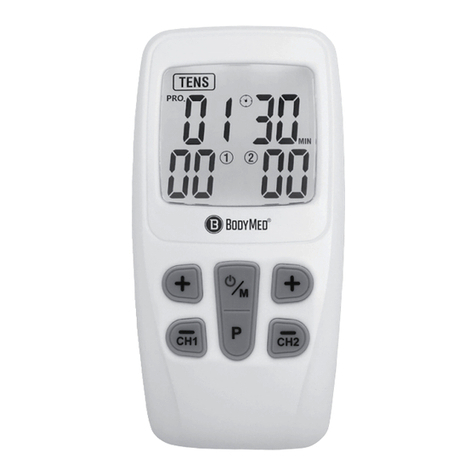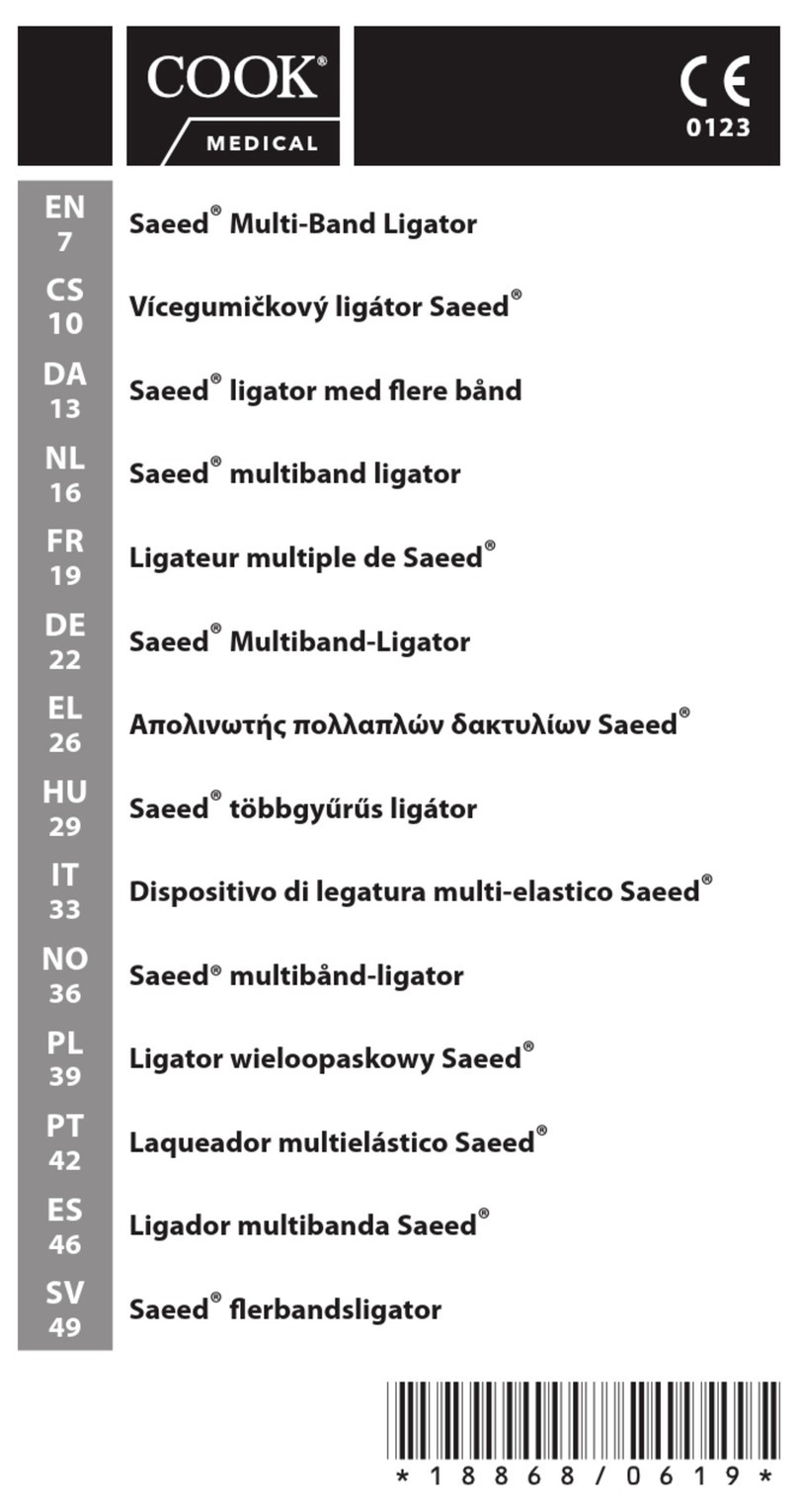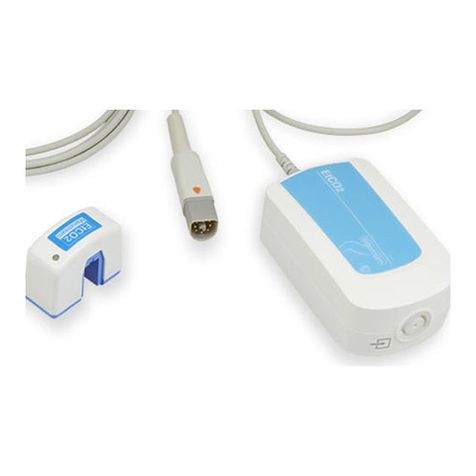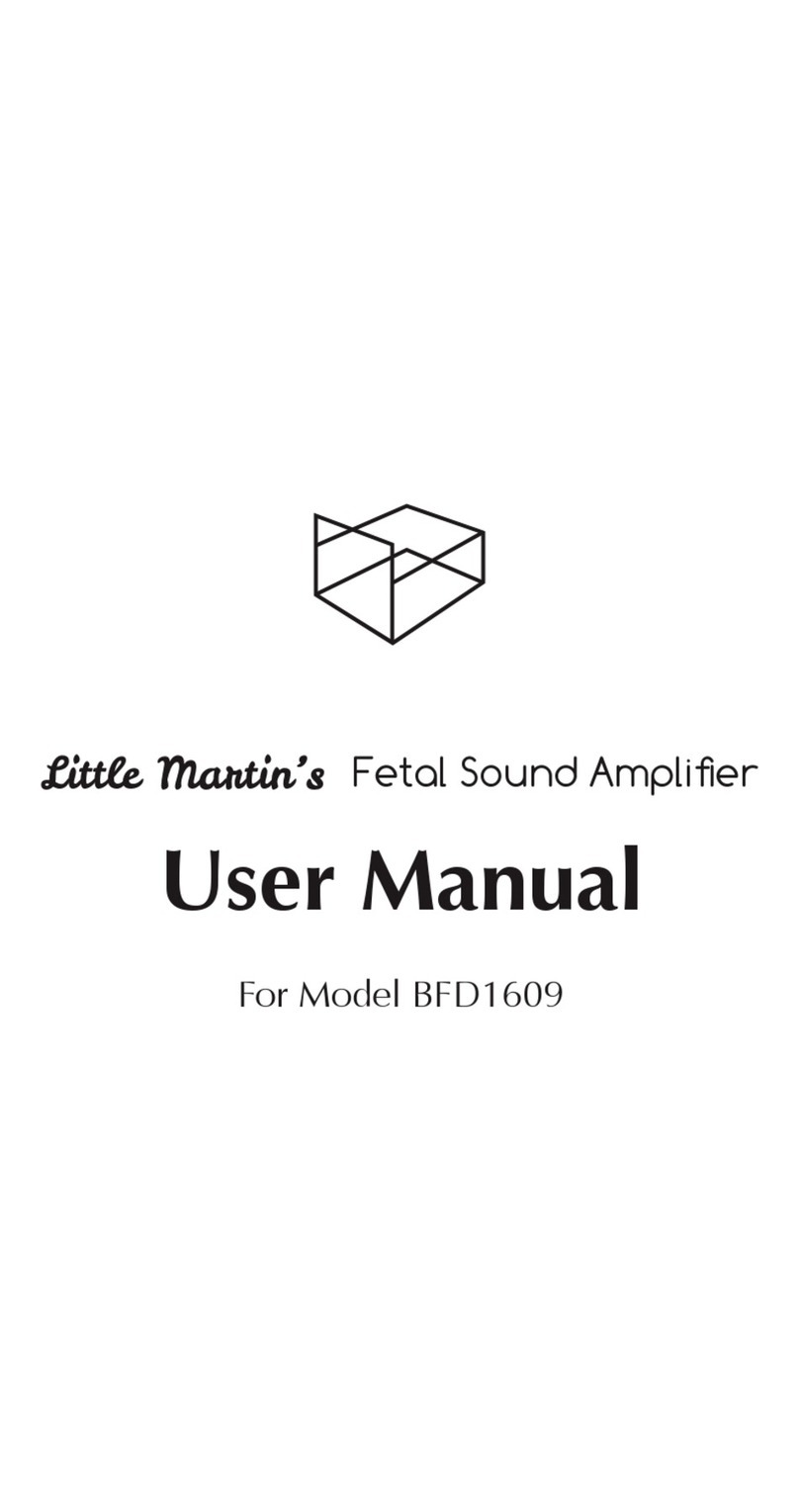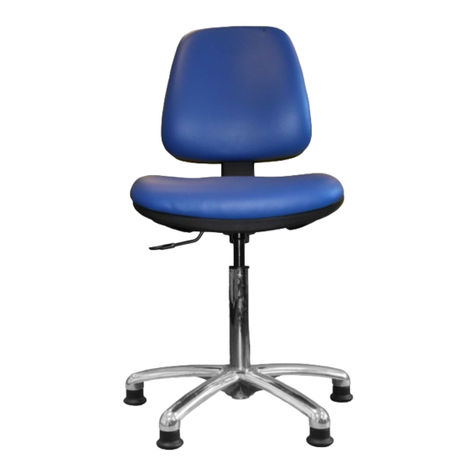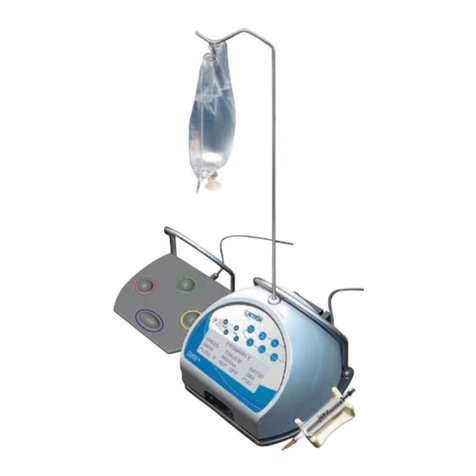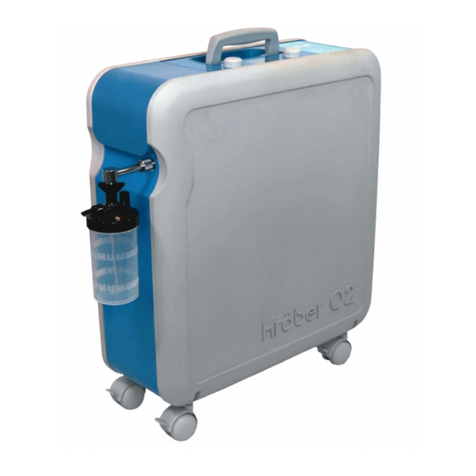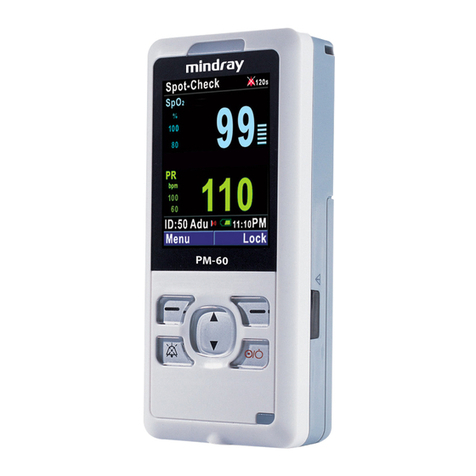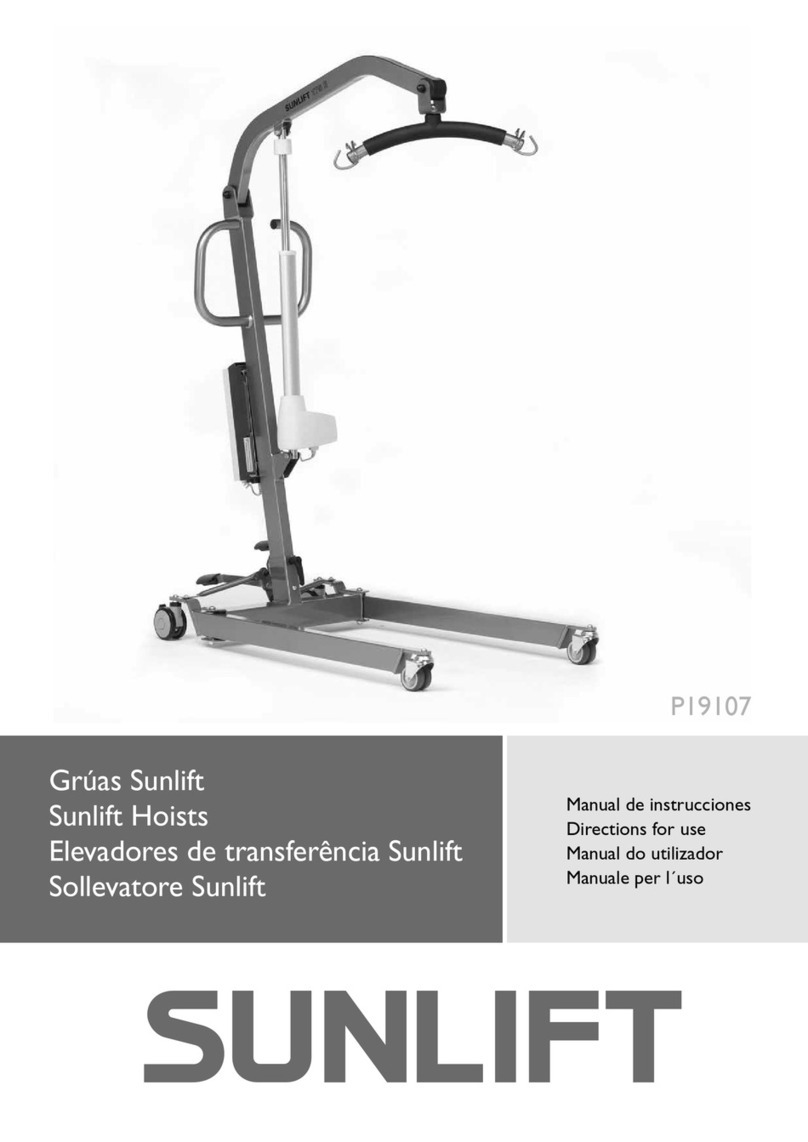Joycare JC-230 FIDATI User manual

User Manual
Read carefully the instructions before using the thermometer
Mode d’Emploi
Lire attentivement les instructions avant d’utiliser le thermomètre
EN
FR
JC-230
Class IIa medical device / Dispositif médical de la classe IIa - Patents / Brevets
US 6,196,714 - US 7,001,066 – EP0909377 – EP1283983B1 – US 6,527,439 -
EP1051600B1.
Other international patents pending / Plusieurs d’autres brevets internationaux ont été
déposés et sont en cours d’examen.
Cod. 9JC2306-AEF REV00-FEB2014
0051 Manufactured in Italy by / Fabriqué en Italie par
TECNIMED S.r.l.
P.le Cocchi, 12 -21040 Vedano O. (VA) - ITALY
/for/pour
JOYCARE S.p.a., Socio Unico
Sede Amm: ViaMassimo D'Antona 28,
Chiaravalle (AN), 60033 (Italy) - Tel +39 071 890151
TECNIMED
®
/ model / modèle
/
5
212
6
8
3
11
12
10
49
7
Fig. 1
1. Sensor
2. Aiming lights
3. Tip
4. “Face” button LED
5. “Face” button for
readings at the
forehead
6. “Home” button for
other readings
7. “Home” button
LED
8. “Mem” button
9. “Mem” button LED
10. Label with
serial number
11. Battery hatch
(2 x AAA)
12. Slide to open the
battery hatch
1. Capteur
2. Faisceaux lumineux de
positionnement
3. Devant du thermomètre
4. LED du bouton "visage"
5. Bouton "visage" pour
les mesures sur le front
6. Bouton "maison" pour
toutes les autres mesures
7. LED du bouton
"maison"
8. Bouton "Mem"
9. LED du bouton "Mem"
10. Etiquette avec numéro
de série
11. Couvercle de protection
des piles (2 x LR03)
12. Soulevez le couvercle
pour le retirer
GB: WARRANTY CARD
Joycare S.p.A., a company with a sole shareholder, offers a period of 3 year
warranty after the date of purchase. The warranty does not cover damage caused
by accidental breakage, transportation, incorrect maintenance or cleaning, misuse,
tampering or repairs carried out by non authorised third parties. The following is
also excluded: damage caused by incorrect product installation, and damage
caused by wear and tear, obviously including parts subject to wear and tear. In
order to obtain the replacement/repair of products under warranty in cases other
than those mentioned above, but which are instead caused by manufacturing
defects, please contact your local importer/distributer. Goods that are not held to
be in good condition because of the aforesaid causes must be accompanied by
this certificate, duly filled-in, as well as a receipt for the goods (invoices and transport
documents) and purchasing documentation.
Please keep the original packaging of the product.
F: CARTE DE GARANTIE
Joycare S.p.A. sociétaire unique, offre 3 année de garantie dès la date d’achat. Ne
sont pas couverts par la garantie les dommages causés par la casse accidentelle,
les dommages dus au transport, par une mauvaise manutention, usage, nettoyage
ou une négligence, par altérations ou réparations effectuées par des personnes
non autorisées. Sont également exclus les dommages dérivants d’une installation
incorrecte du produit et les dommages consécutifs à l’usure des parties, naturellement
sujettes à l’usure. Pour obtenirle remplacement/la réparation du produit sous garantie,
dans les cas non prévus ci dessus, mais pour défauts de fabrication, nous vous
invitons à contacter l’importateur/distributeur local. La marchandise considérée
déficiente pour les raisons évoquées plus haut, doit être accompagnée du présent
certificat dûment complété, de la preuve d’achat des marchandises (facture et dut),
et du document d’achat.
Nous vous recommandons de conserver l’emballage d’origine du produit.
Forehead
Front
Eyelid
Paupière
FAMILY MEMBER TEMPERATURES
at different times of day and when in good health conditions
TEMPERATURE DE CHAQUE MEMBRE DE LA FAMILLE
à différents moments de la journée et en bonne santé
/ NAME / NOM
Morning
Matin
Afternoon
Après-midi
Evening
Soir
/ NAME / NOM
.
/ NAME / NOM
Morning
Matin
Afternoon
Après-midi
Evening
Soir
/ NAME / NOM
Morning
Matin
Afternoon
Après-midi
Evening
Soir
/ NAME / NOM
Morning
Matin
Afternoon
Après-midi
Evening
Soir
/ NAME / NOM
Morning
Matin
Afternoon
Après-midi
Evening
Soir
Fill out this table and use it for reference. Tell your physician what type of thermometer
you have used and the person's normal temperature when in good health conditions.
Remplissez ce tableau et prenez-le comme base. Dans le cas d'une visite chez le
médecin, il est important de lui fournir le type de mesure effectuée et la température
de base établie sur le malade lorsqu'il est en bonne santé.
Morning
Matin
Afternoon
Après-midi
Evening
Soir
Fig. 10
/open/ouvrir
/close/fermer
Fig. 9 MQCS
Fig. 8
MQCS
Fig. 7
Alternative measurement from the eyelid
Mesure alternative sur la paupière
Fig. 6Fig. 5
Correct distance / Bonne distance
/ Too close / Trop près
Fig. 4
/ Too far / Trop loin
Fig. 3
Correct distance and thermometer
perpendicular to the forehead
Bonne distance et thermomètre
perpendiculaire au milieu du front
Fig. 2
!
.
( ) FIDATI
01 - -
2.
2.1
( ) FIDATI
( ) FIDATI
1.
.
- 1
- 2
- 3
- 4
•
•
•
- 5
- 6
- 1
- 2
- 3
- 4
- 5
- 6
- 7
- 7
- 8
- 9
- 10
- 11
- 12
- 13
- 14
.
.
.
.
02 - -
2.2
.
° C (1 °F)
).
) (
03 - -
3.
04 - -
4
4.1
4.2
•
•
•
•
FIDATI is an infrared thermometer intended for intermittent measurement of human
body temperature in people of all ages.
1. INTRODUCTION
Dear Client, thank you for buying FIDATI, the evolution of Thermofocus® - the world's
first non-contact thermometer - and of VisioFocus®. Fidati is truly easy to use. It is
capable of measuring a child or an adult's temperature without ever coming into
contact with the skin: just bring it close to the forehead, at the distance that the
thermometer itself will tell you.
The FIDATI thermometer does not need to be placed in any parts of your child's body.
If your baby is sleeping, you can use FIDATI without waking him up; and, if the child is
awake, FIDATI will not bother him.
01 - English -
2. WARNINGS
Read carefully before using FIDATI
2.1 Precautions
1. Use FIDATI in a draft-free room, at a steady temperature between 16 and 40°C
(60.8 and 104°F).
2. If the device comes from a room having an ambient temperature different from that
of the room in which you are taking the reading (from another room, from a drawer,
etc.), it needs to be stabilized. Do the MQCS before using it (see par. #6). As
alternative, wait at least 5 minutes for the temperature to stabilize through the internal
AQCS (see par. #6), without touching the device.
3. Do not take a temperature reading if the person is sitting in a draft or if the subject
has:
- been walking, running or exercising;
- come from another room that was ventilated or at a different temperature than
the room where the thermometer is used;
- been wearing a cap, hat or scarf;
- been exposed to agents that could alter forehead temperature, e.g. shower,
shampoo, hair-drier, sponging, etc.;
In all the above cases, wait a few minutes for the forehead temperature to stabilize.
4. Changing the reading point will bring to different results. Therefore, remember,
always aim the projection on the same spot, precisely at the centre of the forehead
(midway between the top of the nose and the hairline) and keep the thermometer
perpendicular to the forehead. Do not take measurements on areas other than
the centre of the forehead, except for the case at #4.2.
5. The temperature reading is taken in the area where the temperature is projected.
It is of major importance to make sure that this area does not include eyebrows,
hair or clothing. If necessary, brush away any hair from the forehead but remember,
this must be done a few minutes beforehand or the temperature reading will be
higher that the actual body temperature.
!
02 - English -
6. When taking a temperature reading, remember that in the presence of oils,
make-up or an oxygen mask, and in the case of elderly, the temperature detected
may be lower than the actual body temperature (see also par. #4.2).
7. The forehead temperature reading can be affected by profuse sweating,
superficial wounds or head injury.
8. Do not use the thermometer on a sweaty forehead, since the temperature
reading would be unreliable. Read the par. #4.2.
9. The dark disc at the tip of the device (fig. 1) is the window of the sensor and
the most delicate part of the thermometer. It must be kept clean, crystal clear
and intact. Any damage, dust or dirt will alter the temperature reading.
10. Do not handle the thermometer for longer than strictly necessary before taking
the reading.
11. Do not use the thermometer in direct contact with the ear or other parts of
the body.
12. Do not use the thermometer in direct contact with objects or liquids. Do not
submerge the thermometer in water or other liquids and keep it away from
sources of heat and out of direct sunlight. If water seeps into the thermometer,
contact your Dealer immediately for Technical Service.
13. Do not use FIDATI on a subject making a call with a mobile or cordless
telephone or in the presence of strong electromagnetic fields.
14. Avoid knocking and dropping it, and do not use it if damaged or if not
functioning properly.
2.2 Attention
1. Failure to observe the above-mentioned precautions (par. #2.1) may
lead to very low or very high temperature readings, which cannot be
attributed to product’s malfunctions.
2. The aiming lights meet the photo-biological safety requirements outlined in
standard EN 62471. No harm can be caused should the aiming lights be
accidentally pointed in the eyes: the beams are harmless!
3. The unit is a delicate measurement instrument and must not be used by little
children. It is not a toy. Keep it out of the reach of children or persons with limited
sensorimotor skills. Small parts can be ingested or inhaled.
4. Using this thermometer should not substitute medical consultation. Tell your
physician what type of thermometer you are using and in which part of the body
the temperature reading was taken.
5. If the child’s fidgeting makes it difficult to take a correct reading, take first
confidence with the device in order to approach the baby and take the
temperature very quickly.
6. When taking your own temperature, use a mirror; or the black screen of a
smartphone, or, if you have a child over six years of age, you can teach him
how to use FIDATI.
7. Since it never comes into contact with the body, FIDATI does not require any
“disposable” protection covers.
3. HOW IT WORKS
FIDATI detects the infrared radiation coming from the human body.
The forehead is an ideal site for taking a temperature reading, as it is crossed by
the temporal artery and in direct contact with the brain.
Finally, the head is the first part of the body to change its temperature as a fever
rises and falls.
With each temperature measurement, your FIDATI takes a series of 125 readings
a tenth of a second. Its sophisticated microprocessor thenamplifies and processes
this information along with the room temperature and shows the correct body
temperature through the projection.
It is important to remember that there is not a single "normal" temperature
valid for everyone: moreover, individual temperature varies according to
the measurement’s site and throughout the day, also in response to
physic al or mental effort (for example a baby's crying). Moreover, the body
temperature can be affected by the outside temperature and, depending on the
type of reading taken, other factors may also come into play.
Due to heat dispersion from uncovered parts of the body, the actual temperature
at the forehead is generally lower than that in covered zones.
Therefore, when the “face” button is pressed, the FIDATI software automatically
applies a correction factor and thus the resulting value is comparable to that given
by other more usual temperature reading sites commonly used in the countries
where the unit is sold— axillary, oral or rectal reading, according to the customer’s
choice —.
Nevertheless, the reference value can be changed. Remember, an “oral” reading
is generally 0.2°C (0.4°F) higher than an axillary reading while a “rectal” reading
is 0.8°C (1°F) higher (see par. #8).
The FIDATI temperature reading taken on the forehead of a healthy person can
range between 35 and 37.5°C (95 and 99.5ºF), although in an adult it may even
be below 35°C (95°F) (in axillary mode).
To correctly judge a fever, you need to know the usual temperatures of your
family members when they are in good health condition and at various times of
the day.
To help you with this, fill out the table “FAMILY MEMBER TEMPERATURES
at different times of day and when in good health conditions” and keep it as a
reference.
03 - English -
4. HOW TO USE IT
4.1 Taking the body temperature: forehead
• At the first use, insert 2 AAA batteries as explained at #7.
• Approach FIDATI to the forehead.
•Press the “face” button and hold it down. The two aiming lights and
the light of the “face” button turn on and you will begin to see the temperature
reading, projected onto the forehead between or overlaid to two dots.
•While keeping Fidati perpendicular to the centre of the forehead, move it
back or forth until the temperature reading is set squarely between the two dots
(fig. 2): if the thermometer is too close, or too far away, the temperature value
will be partially overlapped to the two dots (fig. 3 and 4).
•When you se e the temperature in the middle of the two dots, the
thermometer is at the right distance (fig. 5): release the button, keep the
thermometer steady while the projection flashes and read the temperature
value. If necessary, you can immediately take another reading.
If necessary, you can immediately take another reading.
After the measurement, the light of the button used stays on and the projection
of the temperature value will remain visible for about 12 seconds, during which,
if necessary (as in the case of self-measurement), you can aim the thermometer
against another surface to re-read the temperature measured. You will not need
to respect the correct distance from the surface: in fact in this case, the
thermometer is not taking a temperature, but only projecting the temperature
value that has already been detected.
For the following 3 seconds the projection will show the current setting (Oral,
Rectal or Axilla - see par. #8) before turning itself off.
4.2 In case of sweating: take the reading on the eyelid
At times, the forehead can show signs of sweat, for example as a fever drops,
and this can result in a low reading. Drying the forehead is not enough. In this
case, you can take the temperature reading, again from a distance, aiming the
device in the centre of the closed eyelid (fig. 6). Do not worry if your child opens
its eyes while you are taking the reading: the lights are harmless.
Precision is not guaranteed, but such a reading can be considered a valid
approximation of one's body temperature. In adults, such a reading is also
indicated in the presence of oil or make-up on the forehead; it is valid for the
elderly also.
04 - English -
FIDATI est un thermomètre infrarouge destiné à la mesure de la température
corporelle des enfants et adultes.
1. PREFACE
Merci d’avoir acheté FIDATI, l'évolution de Thermofocus®(le premier thermomètre
sans contact au monde), et de VisioFocus®.
FIDATI est pratique et facile à utiliser. Il peut prendre la température d'un être
humain, nouveau-né ou adulte, sans même effleurer la peau, simplement en
l'approchant du front, à une distance que FIDATI vous indiquera. Avec FIDATI,
pas besoin d'introduire le thermomètre dans une partie du corps de votre enfant.
Si votre enfant dort, vous pouvez prendre sa température sans le réveiller, et s’il
est réveillé, la prise de température ne sera plus associée à un moment pénible.
01 - Français -
2. AVERTISSEMENTS
Lire attentivement les instructions avant d'utiliser FIDATI
2.1 Précautions d'emploi
1. La prise de température doit être réalisée dans une pièce ayant une température
uniforme, comprise entre 16 et 40°C, en dehors de tout courant d’air.
2. Si FIDATI provient d’un lieu ayant une température différente de celle de la pièce
où vous êtes (pour exemple, de une autre pièce, d’un cabinet, ecc), faites le
calibrage manuel MQCS (voir par. #6). En alternative, attendez au moins 5 minutes
pour lui permettre de se stabiliser (AQCS, par. #6), et ceci sans le toucher.
3. Attendez quelques minutes pour permettre à la température du front de se stabiliser
dans ce cas:
• si le sujet vient de l’extérieur ou d'un lieu à température sensiblement différente de
la pièce dans laquelle vous utilisez FIDATI;
• s’il est ou a été exposé à tout courant d’air;
• si, dans les minutes avant la prise:
- il vient de faire un exercice physique, de marcher ou courir;
- il vient de porter un chapeau ou un bonnet;
- il vient d’être exposé à une quelconque activité susceptible d’affecter sa
température frontale comme la prise d’une douche, l’utilisation d’un
sèche-cheveux, d’une éponge froide, etc.
4. Si vous changez le point de la prise sur le front, vous obtiendrez des résultats
différents. Pour cela, il est indispensable de pointer la projection toujours sur le
même endroit en tenant FIDATI bien perpendiculaire au centre du front (à
mi-distance entre le début du nez et le début des cheveux). Ne pas prendre la
température sur d’autres points, autres qu’au centre du front, à l'exception
de ce qu'est expliqué au par. #4.2.
5. La température corporelle est mesurée dans la zone où la température est
projetée. Il est très important de s'assurer que cette zone n'est pas obstruée par des
cheveux ou des vêtements et n'inclut pas les sourcils. Si nécessaire, dégagez
!
02 - Français -
les cheveux quelques minutes avant de prendre la température pour éviter
d’avoir une lecture plus haute que la correcte température corporelle.
6. En présence d’huiles, maquillages sur le front ou un masque à oxygène, ou
en cas de personnes âgées, la lecture peut être plus basse que la correcte
température corporelle (voir par. #4.2).
7. La température relevée peut être affectée par une transpiration élevée, blessures
superficielles ou par un trauma crânien.
8. Ne pas utiliser le FIDATI sur le front en sueur, puisque la valeur
relevée ne serait pas précise (lisez le par. #4.2).
9. Le petit disc foncé sur le devant de FIDATI (fig. 1) est le capteur, et il est la
partie la plus délicate de l'instrument. Il doit être en permanence propre et intact.
Tout dommage, ou la présence de poussière ou autre saleté, altèreraient la lecture.
10. Evitez de manipuler plus que le nécessaire le thermomètre avant toute utilisation.
11. Ne pas utiliser FIDATI au contact de l'oreille, ou toute autre partie du corps.
12. Ne pas utiliser FIDATI au contact avec objets ou liquides. Ne pas immerger
le thermomètre dans l’eau ou autres liquides, le tenir loin de toute source de
chaleur et éviter de l'exposer directement aux rayons du soleil. Si du liquide est
pénétré dans le thermomètre, contactez immédiatement le distributeur.
13. Ne pas utiliser FIDATI à proximité d’appareils qui émettent des champs
magnétiques (pour exemple, ne pas prendre la température d'un sujet qui
commence une conversation avec un téléphone portable).
14. Évitez tout choc sur FIDATI. Ne pas l'utiliser s'il a été abîmé ou s'il ne fonctionne
pas correctement.
2.2 Attention
1. Ne pas suivre strictement ces recommandations peut aboutir à des
indications de températures erronées et non imputable à une défectuosité
du FIDATI.
2. La sécurité photo-biologique des lumières de pointage est garantie en conformité
à la norme 62471. N’ayez pas peur si les lumières sont dirigées par mégarde
vers les yeux: elles sont absolument inoffensives!
3. FIDATI est un appareil médical sensible et ne doit en aucun cas être utilisé
comme jouet par les enfants. Tenir loin de la portée des enfants ou des personnes
ayant des capacités motrices ou sensorielles réduites. Des petites parties peuvent
être ingérés ou inhalées.
4. L’usage de ce thermomètre ne doit pas se substituer à la consultation d’un
médecin. Indiquez à votre médecin quel genre de thermomètre vous avez utilisé
et dans quelle partie du corps vous avez mesuré la température.
5. Si les mouvements brusques de l’enfant perturbent la prise de température,
prenez d’abord confiance avec le thermomètre de façon de vous approcher au
bébé et prendre sa température in seulement quelques instantes.
6. Si vous voulez mesurer votre propre température, vous pouvez vous aider d’un
miroir ou de l’écran éteint d’un smartphone; ou même montrer à un enfant à partir
de l’âge de six ans comment l’utiliser.
7. FIDATI ne touche jamais le corps et donc ne nécessite d’aucun capuchon de
protection à usage unique.
3. PRINCIPE DE FONCTIONNEMENT
FIDATI capte les émissions infrarouges provenant du corps humain.
Le front est un endroit idéal pour prendre la température corporelle, car il est irrigué
par l'artère temporale et en contact direct avec le cerveau, et parce que la tête est
la première partie du corps qui sent sa température modifiée aussi bien lorsque la
fièvre monte ou descend.
A chaque mesure, FIDATI effectue, chaque dixième de seconde, 125 relevés, qui
sont amplifiés et traités par son microprocesseur sophistiqué, tout en tenant
compte de la valeur de la température ambiante, de façon à afficher sur l'écran
la température correcte.
Il est important de savoir qu'il n'existe pas une seule température "normale"
égale pour tous. En outre, la température individuelle varie selon la zone
du corps où l’on fait laprise, au cours de la journée, selon l’activité physique
et mentale (les pleurs dans le cas d'un bébé) et peut être influencée par la
température externe et par d’autres facteurs divers, selon la typologie de mesure
effectuée.
En raison des pertes de chaleur dont les parties du corps pas protégées par des
vêtements, sont l'objet, la température normale que l'on peut rencontrer sur le front
est plus basse par rapport à celle des parties couvertes.
Pour cela, lorsqu’on utilise le bouton “Visage”, le logiciel du FIDATI corrige
automatiquement les températures captées et fournit une valeur approximativement
comparable aux mesures effectuées dans d’autreszones du corps, communément
utilisées dans les pays où le thermomètre est vendu (mesure aissellaire ou orale
ou rectale, selon le paramètre choisi par l’utilisateur).
Si vous le souhaitez, vous pouvez changer ce paramètre. Remarque: lorsque
l'appareil est sur le réglage de la température rectale, la mesure affichée sera
d'environ 0,6°C plus élevée que la prise orale et de 0,8°C plus élevée que la prise
en aissellaire (lire le par. #8).
La température relevée avec FIDATI sur le front d'une personne saine peut varier
de 35 à 37,5°C. Elle peut même être inférieure à 35°C chez un adulte (en mode
axillaire).
Il est donc indispensable de connaître la température normale de chaque membre
de la famille dans des conditions optimales de santé et lors de divers moments de
la journée, pour pouvoir évaluer au mieux les états fébriles éventuels.
Remplissez le tableau “TEMPERATURE DE CHAQUE MEMBRE DE LA FAMILLE
à différents moments de la journée et en bonne santé” et prenez-le comme base.
03 - Français -
4. MODE D’EMPLOI
4.1 Prise de la température corporelle: sur le front
• À la première utilisation, insérer 2 piles AAA, comme expliquée au par. #7.
• Approcher FIDATI au front.
• Appuyez sur le bouton “visage” et maintenez-le enfoncé : les deux
lumières de pointage et le LED du bouton « visage » s'allument et vous allez
commencer à voir la valeur de température projetée sur le front, entre deux
points ou en part recouvertes par deux points.
• Tenir FIDATI perpendiculairement sur le milieu du front et le rouler en
avant ou en arrière jusqu’à ce que la température apparaisse complètement
entre les deux points (fig. 2): si vous êtes trop près ou trop loin, vous voyez
le température au-dehors des points (fig. 3 et 4).
• Lorsque vous pouvez lire clairement la température entre les points (fig.
5) le thermomètre est à la distance correcte. Relâchez le bouton en tenant
fermement le thermomètre en place jusqu'au clignotement des lumières et lisez
la valeur.
Si nécessaire, il est possible de procéder immédiatement à une nouvelle prise
de température.
Lorsque la prise est terminée, le LED du bouton utilisé restera allumé et la
projection de la valeur de température restera visible pour 12 secondes environ.
Pendant ce temps-ci, si nécessaire (pour exemple dans le cas de prise par
l’utilisateur on soi-même) vous pouvez approcher le thermomètre à une autre
surface pour re-lire la température relevée (il n’est plus nécessaire de respecter
la distance correcte, car le thermomètre, dans ce cas, n’est plus en train de
prendre la température mais il est entrain de projeter la valeur qu’il a déjà
relevé).
Dans le 3 secondes suivant, la projection va montrer la paramètre en cours
(oral, rectal ou axillaire, voir par. #8) avant de s’éteindre.
4.2 Transpiration: prendre la température sur la paupière
Lorsque la fièvre diminue, le front peut transpirer, rendant sa température trop
basse. Il n’est pas suffisant d’essuyer le front. Dans ce cas, il est possible de
prendre la température en effectuant une petite excursion sur la paupière fermée
(fig. 6). Ne vous inquiétez pas si le patient ouvre les yeux lors de la mesure: les
lumières sont inoffensives.
Procédez de la même façon que pour la prise sur le front.
L’exactitude ne peut pas être garantie, mais celle-ci peut être considéré comme
une approximation raisonnable de la température corporelle. Cette mesure est
indiquée aussi pour les adultes lorsque la lecture frontale de la température est
affectée par de l'huile ou des cosmétiques, ou sur les personnes âgées.
04 - Français -

12.
Mod. FIDATI JC-230
34,0/42,5°C
16/40°C (1)
0,1
+/-0,3°C
+/-0,2°C (2)
+/-0,3°C
1,0/55,0°C
16/40°C (1)
0,1
+/-1,0°C
+/-0,3°C
+/-0,2°C
+/-0,3°C
+/-1,0°C
10 - -
( 198. 7-93.2) ( 35.9-34)
( 102. 2-98.6) ( 39-36)
( 108.5-102.3) ( 42.5-39.1)
( 67.9 -33.8) ( 19.9-1 )
( 96.7-68) ( 35.9-20)
( 102. 2-98.6) ( 39-36)
( 108.5-102.3) ( 42.5-39.1)
( 131- 108.7) ( 55-52.6)
Lo.5
CEI EN 60601-1 and 60601-1-2 (E1965-98:2009
EEC Directive 93/42
Tecnimed srl, P.le Cocchi, 12 - 21040 Vedano O.
(VA) - Italy
“Hi.2”
“Lo.3”
09 - -
11.
5
1
“E.1” ( ) “bAt”
“Hi.2”
“Hi.4”
“Lo.5”
“Lo.5”
“CAL”
“E.8”.
08 - -
() “bAt”
10.
07 - -
.
F
C
Ax
Or.
rEc
9.
8.
Automatic Quick Calibrati on System (AQCS)
AQCS
Manual Quick CalibrationSystem (MQCS)
06 - -
•
•
•
•
•
•
7.
6.
.
•
•
•
- 1
- 2
•
- 1
- 2
- 3
).
.
.
05 - -
5.
4.3
10 - English -
12. TECHNICAL CHARACTERISTICS
Power supply: 2 AAA (LR03) alkaline batteries - 1.5 V
Life of high quality batteries: more than 1 year or than 1,000 readings (depending on use).
Dimensions: mm 94,5 x 43,5 x 21,5 (3.72, 1.71, 0.85 inches)
Weight: gr. 60 (2.12 oz) - (included batteries)
Distance from the subject: approximately 6 cm, calculated using an optical aiming system.
Keep in a clean, dry place, preferably at a temperature ranging between +16 and +40°C (60.8 and 104°F). Store at a
temperature included between -10 and +60°C(14 and 140°F) and in any case not lower than -18°C (0.4°F)or higher
than +70°C (158°F).
Expected life: 10 years.
FIDATI is a class IIa medical device (per Directive 93/42/EEC and subsequent amendments and integrations), belonging
to the Thermofocus and VisioFocus Family, tested in hospitals, private clinics and medical offices.
Contact the manufacturer for clinical precision, characteristics and procedures.
Tecnimed srl, P.le Cocchi,12 - 21040 Vedano Olona (VA) - Italy undertakes full responsibilityfor this product's compliance
with the reference standards.
FIDATI is compliant with the pertinent ASTM standard (E1965-98:2009) and CEI EN 60601-1 and 60601-1-2 standards.
Internally powered equipment for continuous operation.The FIDATI LEDs emit low light radiation in compliance with IEC
62471.
FIDATI Non-contact infrared thermometer
Dispose of the device
in compliance with
applicable legislation
regarding electrical
equipment and
batteries.
Follow instructions for use
Device designed for
continuous use
Keep away from water
ATTENTION: read the
warnings
Recyclable material
Applied part: type BF
(1) The “face”button can alsooperate in rooms where the temperatureis between 10 and 16°C(50 and 60.8°F);while the
“home”button can also operate in roomswhere the temperature is between 5 and 16°C (41 and 60.8°F):in both cases,
accuracyand the operatingrange are not guaranteedand the reading is displayed as"Lo.5".
(2) The ASTM E1965-98-2009 standard requires +/-0.2°C (+/-0.4°F) accuracy for infrared thermometers in the
37-39°C (98.6-102.2°F) temperature range while the ASTM E667-86 and E1112-86 standards require +/- 0.1°C
(+/-0.2°F) precision for mercury and electronic thermometers in that same temperature range.
Measurement range
Room temperature working range
Resolution
93.2/108.5 °F
60.8/104.0 °F (1)
0.1
+/- 0.5°F
+/- 0.4°F (2)
+/- 0.5°F
Taking the body
temperature at
the forehead
34,0/42,5°C
16/40°C (1)
0,1
+/-0,3°C
+/-0,2°C (2)
+/-0,3°C
Accuracy
Accuracy
Accuracy
from 34,0 to 35,9°C
from 36,0 to 39,0°C
from 39,1 to 42,5°C
from 93.2 to 96.7°F
from 96.8 to 102.2 °F
from 102.3 to 108.5°F
33.8/131 °F
60.8/104.0 °F (1)
0.1
+/- 1.8°F
+/- 0.5°F
+/- 0.4°F
+/- 0.5°F
+/- 1.8°F
Measurement range
Room temperature working range
Resolution
1,0/55,0°C
* 16/40°C (1)
0,1
+/-1,0°C
+/-0,3°C
+/-0,2°C
+/-0,3°C
+/-1,0°C
Accuracy
Accuracy
Accuracy
Accuracy
Accuracy
from 1,0 to 19,9°C
from 20,0 to 35,9°C
from 36,0 to 39,0°C
from 39,1 to 42,5°C
from 42,6 to 55,0°C
from 33.8 to 67.9°F
from 68.0 to 96.7°F
from 96.8 to 102.2 °F
from 102.3 to 108.5°F
from 108.7 to 131 °F
Other
readings
11. TROUBLESHOOTING
1. The projection does not turn on:
- the batteries are completely dead or incorrectly inserted; replace or reinsert
them (par. #7).
2. The temperature is not projected between the two dots:
- the unit is not at the correct distance; move the thermometer forward or back
until the projected temperature falls precisely between the two dots (fig. 5).
3. The projected temperature is not clearly visible:
- there is too much light in the room or the batteries are flat; cast a shadow
over the subject or replace the batteries.
4. The sensor (fig. 1) is damaged or water has seeped into the thermometer:
- contact your Dealer right away for technical service.
5. The thermometer temperature reading is too low:
- make certain that the warnings (par. #2) have been met;
- check that the sensor (fig. 1) is not soiled or damaged; if it is, clean it as
indicated in par. #9 or contact your Dealer for technical service;
- check that the thermometer is perpendicular to the forehead (fig. 2).
6. The thermometer temperature reading is too high:
- make certain that the warnings have been met (par. #2).
7. The thermometer appears blocked, for instance, some lights keep themselves
on for longer than 2 minutes:
- reset the thermometer by removing and reinserting the batteries.
If you’ve pressed the
“home” button: the
surface temperature read
is below the operating
limit (<1°C/33.8°F ).
The temperature reading
cannot be taken.
09 - English -
If you’ve pressed the
“home” button: the
temperature detected
exceeds the limit for
unit operation (>55°C or
>131°F ).
The temperature
reading cannot be
taken.
The projection reads
"Hi.2".
If you’ve pressed the
“face” button: the
temperature detected
exceeds the limit for
operation with this button
(>42.5°C or >108.5ºF ).
Pleasemake certain that
you’vepressed the
correctbutton, with
regardto the measured
object,and that the
warnings have beenmet.
The projection reads
“Lo.3”.
If you’ve pressed the
“face” button: the
forehead temperature
appears to be too low
(<34.0°C or <93.2°F ).
Make certain the sensor is
not soiled or damaged
and thatthe subject has
not comefrom a
cold room.
ITEM PROJECTED and DESCRIPTION PROBLEM SOLUTION
“E.1” and the symbol
“bAt” ( ),
appear, or the unit does
not turn on at all.
Remove the batteries
immediately and replace
them when necessary
(see par. #7).
The batteries are
dead.
Obtain new batteries for
changing them when the
signal E.1 (below) appears.
The symboL “bAt” ( ) is projected in
alternation with the temperature value.
The batteries are low but
many measurements may
be taken still.
ITEM PROJECTED and DESCRIPTION PROBLEM SOLUTION
10. MEANING OF MESSAGES
The projection shows "Hi.2" and the value
alternately.
Seek medical attention.
If you’ve pressed the
“face” button:
temperature of
40°C/104°F or more.
"Hi.4"appears on the
projection.
The room temperature is
too high (above 40°C /
104°F).
Move to another,
cooler site.
The projection
reads"Lo.5”.
If you’ve pressed the
“face” button: the room
temperature is too low
(below 10°C or 50°F).
Move to another,
warmer room.
08 - English -
If you’ve pressed the
“home” button”: the room
temperature is too low
(below 5°C or 41°F).
If you’ve pressed the
“home” button”: the
room temperature is
between 5 and 15.9°C
(41 and 60.6ºF).
“Lo.5"and the temperature value are
projected alternately.
The temperature reading
can be taken but
accuracy is not
guaranteed.
If you’ve pressed the
“face” button”: the room
temperature is
between 10 and 15.9°C
(50 and 60.6ºF).
The projection shows
“CAL” and the lights of
the “face” and the
“home” buttons flash.
The thermometer has not
stabilized. The symbol
“CAL” and the blinking
lights suggest that you
perform the MQCS.
Perform an MQCS (par.
#6).
The projection reads
"E.8".
The thermometer was
moved before the light
started flashing, or the
area is subject to strong
electromagnetic fields.
Wait until the lightstarts
flashing beforemoving the
thermometer; make certain
that there are no mobile or
cordless telephones in the
vicinity.
07 - English -
8. HOW TO CHANGE the SETTINGS from CELSIUS (°C) to
FAHRENHEIT (°F), from AXILLARY to ORAL or RECTAL and vice versa
Depending on where it is going to be sold, your thermometer leaves the factory:
- preset to Celsius (°C) or Fahrenheit (°F)
- and referred to axillary (“Ax”), oral (“Or.”) or rectal (“rEc”) temperature readings,
or internal temperature readings;
If necessary, these settings can be modified as follows:
•while the thermometer is off, aim the thermometer to any uniform surface;
•press and hold the “Mem” button; the projection will show the letter “A”
and after about 8 seconds it will change, showing the settings in sequence:
•when the desired setting appears, release the button.
Only one setting can be modified at a time.
If the thermometer was produced with the sole internal temperature setting,
only the °C/°F setting will be available for changing.
The measurement of the body temperature should be taken always at the
centre of the forehead (par. #4.1) or at the eyelid (par. 4.2), no matter what
the current setting is: in fact, the axillary, oral or rectal settings provide a
forehead temperature value that is a valid approximation of the axillary, oral
or rectal temperature respectively (see par. 3).
9. CLEANING
CLEANING THE SENSOR: The thermometer sensor (fig. 1) is a very delicate area
and must be kept clean. Store the device in a dry, clean place, away from dust.
However, if you need to remove dust or dirt from the sensor, use a cotton swab
slightly dampened with alcohol. Remove all dirt and make certain that nothing
accumulates on the sensor’s lens. Do not use any other objects or liquids as the
surface of the sensor could easily be scratched or damaged. Never let any excess
liquid penetrate into the thermometer and sensor.
CLEANING THE THERMOMETER BODY: use a soft cloth dampened with soap and
water and possibly re-wipe with a sodium hypochlorite disinfectant.
DO NOT USE the thermometer for at least 30 minutes after cleaning.
6. ROOM TEMPERATURE CALIBRATION
If, pressing the “face” button, the projection shows “CAL”
the device needs to be stabilized (par. 2.1.2).
Therefore, the thermometer will not let you take a measurement, which would
not be correct. On the contrary it will activate an Automatic Quick Calibration
System (AQCS). Now you have two possibilities:
1. Wait about 5 minutes without touching the thermometer, until the
AQCS ends.
2. Perform a Manual Quick Calibration System (MQCS)
as follows:
•press the “face” and “home” button simultaneously (fig. 8)
as suggested by their flashing lights: the light of the “home” button will
flash;
•within 10 seconds, focus the thermometer on an internal wall or wardrobe
with uniform temperature and at a point between approximately between
80 and 150 cm (30 and 60 inches) from the floor and press the
"home” button (fig. 9).
•once the right distance is reached (temperature values placed between
the two dots, fig. 5), release the button: the projection will flash slowly
showing the room temperature.
To ensure a reliable temperature reading, do not focus the thermometer on an
outside wall, window, source of heating or cooling (radiator, air conditioner, lamp,
computer, surface in contact with the human body, etc.).
The thermometer is now ready to take a reading and will keep the MQCS for 15
minutes. The MQCS is possible only if the room temperature is in the 16-40°C
(60.8-104°F) temperature range.
Manual quick calibration (MQCS) can also be performed without the
thermometer’s suggestion if, for example, you need to move through
rooms having different temperatures.
7. REPLACING the BATTERIES
•
Set your thumb in the oval hollow on the back of the unit, press down and
slide the battery hatch out as shown in figure 10.
•Remove the battery hatch.
•Remove the old batteries and dispose of them as required in the containers
provided for this purpose.
•Insert 2 new AAA - LR03 batteries, preferably alkaline, carefully complying
with the position indicated in their housing.
•To close the hatch, slide it in the opposite direction from which it was
opened. After changing the batteries, let the thermometer stabilize for 20
minutes before taking a temperature reading, or run a MQCS (par. #6).
•Remove the batteries if you do not expect to use the thermometer for a long time.
06 - English -
05 - English -
4.3 Other readings
FIDATI can also be used to read the temperature of objects, food, liquids and
other surfaces in the 1-55°C (33.8-131°F) temperature range. For example:
1. temperature of a baby's feeding bottle (fig. 7), food, bath, etc. In this case,
mix the liquid well before taking the reading. With hot liquids or foods, take
the reading quickly to prevent condensation from forming on the lens and wait
30 min. before taking another reading;
2. room temperature, by pointing the thermometer against a wall or a piece
of furniture (see also par. #5);
3. temperature of a wound, inflammation, scar (for medical use).
Procee d as you would do for a forehead readin g (par. #4.1), but press
the “hom e” button ; the projection will appear on the surface and the
light of the “home” button will turn itself on.
After the measurement, the projection of the temperature value will remain
visible for about 12 seconds, During this time, should you find it difficult to
see the temperature value, (as in the case of transparent, too dark or irregular
surfaces, such as bathwater, wine, soup) then, once released the button, you
may address the projection on another light and opaque surface. You will not
need to respect the correct distance from the surface: indeed in this case, the
thermometer is not taking a temperature, but only projecting the temperature
value that has already been detected.
5. MEMORY FUNCTION and AMBIENT TEMPERATURE
The “Mem” button lets you see the ambient temperature and call up the last 9
temperature readings (memory function).
- Aim the device at any uniform and clear surface.
- Press once the “Mem” button: the projection will show the letter “A” ,
(Ambient) alternating with the ambient temperature value, and the light of the
“Mem” button will turn itself on.
- Pressing again the “Mem” button, the projection will show the number 1 in
alternation to the last temperature taken. The light of the button which had been
used for that measurement (“face” or “home”) will turn itself on. If you push the
button again before the memory’s light turns itself off: the number 2, alternating
with the penultimate temperature taken will be projected, with and the lightening
of the used button will turn itself on. And so on.
10 - Français -
Alimentation: 2 piles type AAA (LR03) alcalines de 1,5 V
Durée de vie des piles de qualité: plus de 1 année ou 1.000 mesures, en fonction de l’usage
Dimensions: mm 94,5 x 43,5 x 21,5
Poids: gr. 60 - (y comprises les piles)
12. CARACTÉRISTIQUES TECHNIQUES
FIDATI Thermomètre à infrarouges à distance
Distance de fonctionnement de la personne fixée par signalisation optique: 6
cm environ.
A conserver dans un lieu sec et propre, de préférence à une température comprise
entre +16 et +40 °C. Ne pas stocker à une température inférieure à -18°C et
supérieure à +70°C.
Durée de vie prévue du thermomètre: 10 ans.
FIDATI est un dispositifmédical de classe IIa (en conformité à la Directive 93/42/CEE
et modificationssuccessives),appartenantaux famillesde Thermofocuset VisioFocus,
testés en milieu médical et hospitalier. Les études cliniques, les caractéristiques
techniqueset les procédures sont disponibles chezle fabricant sur simple demande.
Thermomètre infrarouge qui répond aux normes ASTM (E1965-98 :2009) et aux
normes CEI EN 60601-1 et CEI EN 60601-1-2.
Les composantes int ernes du FIDATI sont sous t ension permanente po ur une
utilisation continue.
L'entière responsabilité pour la conformité de ce produit par rapport à la norme est
assumée par Tecnimed srl, 12, p.le Cocchi - 21040 Vedano Olona (VA) – ITALIE.
Les faisceaux lumineux sonten conformité au niveau prévu par la norme IEC 62471.
Suivre les instructions
Appareil prévu pour
utilisation continue
Tenir loin de l’eau
ATTENTION: il y a d es
précautions d’emploi
Matériau recyclable
Partie appliquée
type BF
Intervalle de mesure
Intervalle de température
ambiante
Résolution
Exactitude de 34,0 à 35,9°C
Exactitude de 36,0 à 39,0°C
Exactitude de 39,1 à 42,5°C
34,0/42,5°C
16/40°C (1)
0,1
+/-0,3°C
+/-0,2°C (2)
+/-0,3°C
Intervalle de mesure
Intervalle de température ambiante
Résolution
Exactitude de 1,0 à 19,9°C
Exactitude de 20,0 à 35,9°C
Exactitude de 36,0 à 39,0°C
Exactitude de 39,1 à 42,5°C
Exactitude de 42,6 à 55,0°C
1,0/55,0°C
16/40°C (1)
0,1
+/-1,0°C
+/-0,3°C
+/-0,2°C
+/-0,3°C
+/-1,0°C
Mesure de la température
corporelle sur le front D’autres mesures
(1) Le bouton « visage » peut fonctionner même dans des pièces
avec une température comprise entre 10 et 16°C, et le bouton
« maison» peut fonctionner même dans des pièces avec une
température comprise entre 5 et 16°C. Dans les deux cas, la
précision de l’intervalle de mesure n’est pas garantit et la valeur
lue alterne avec "Lo.5".
(2) Les exigences de précision du laboratoire
ASTM dans la gamme d'affichage de 39 a 39°C)
pour les thermomètres IR est de +/- 0,2 °C tandis
que pour les thermomètres à tube de mercure et
les thermomètres électroniques, l'exigence selon
les normes ASTM E 667-86 et E 1112-86 de 37 a
39°C est de +/- 0,1°C.
Respecterla réglementationen vigueurconcernantl’éliminationdes piles etdes appareils électroniques.
11. DISFONCTIONNEMENTS ÉVENTUELS et SOLUTIONS
1. La projection ne s'allume pas:
- les piles sont complètement épuisées ou mal mises en place; les remplacer
ou les réinsérer correctement en respectant bien les polarités (par. #7).
2. La valeur de la température projetée n'est pas placée entre les deux points:
- la distance entre l'appareil et le front est incorrecte, déplacez le thermomètre
plus près ou plus loin jusqu'à ce que vous pouvez voir clairement la valeur de
la température entre les points (fig. 5).
3. La valeur de la température projetée est peu visible:
- la lumière ambiante est trop vive ou les piles sont en train de se décharger;
faire de l’ombre avec votre corps ou changer les piles.
4. Le capteur (fig. 1) est abîmé ou de l'eau est rentrée dans le thermomètre:
- contacter le distributeur pour assistance.
5. La température visualisée par le thermomètre est trop basse; vérifier que:
- les conditions prévues dans le par. #2.2 ont été respectées;
- le capteur (fig. 1) n’est pas sale ou abîmé: si tel est le cas, nettoyer comme
indiqué (par. #9) ou contacter le distributeur pour assistance;
- le thermomètre est bien positionné perpendiculairement au front
(fig. 2).
6. La température visualisée apparaît trop élevée:
- vérifier que les conditions prévues dans le par. #2.2 ont été respectées.
7. Le thermomètre semble bloqué (pour exemple des lumières restent allumées
pour plus de 2 minutes):
- remettre le thermomètre à l'état initial, en enlevant et en remettant les piles.
Si vous avez pressé sur le
bouton “maison”: la
température de la surface
relevée n'atteint pas la limite
inférieure (<1°C).
Il est impossible de
prendre
la température.
09 - Français -
Si vous avez pressé sur le
bouton “maison”: la
température de la surface
relevée a dépassé la limite
supérieure de l’appareil (>55°C).
La projection
indique"Hi.2".
Si vous avez pressé sur le
bouton “visage”: la
température de la surface
relevée a dépassé la
limite supérieure avec
ce bouton (>42,5°C).
Assurez-vous d’avoir
appuyésur le bouton
correctpour ce dont vous
devez prendre la température
et assurez-vous queles
conditions prévues soient
respectées.
Il est impossible derelever
la température.
La projection
indique"Lo.3".
Si vous avez pressé sur le
bouton “visage”: la
température du front
apparemment trop basse
(<34,0°C).
Vérifier que le capteur
n'est passale ou abîmée
ou que la personnene
viennepas d'un
environnement à
température basse.
INSCRIPTION et DESCRIPTION PROBLEME SOLUTION
La projection indique
"E1" en alternance au
symbole “bAt” ( ),
ou elle ne s'allume pas.
Enlevez immédiatement les
piles et les substituer
quand nécessaire
(voir le par. #7).
Les piles sont
complètement
hors d'usage.
Procurez-vous les piles
pour le changer quand le
symbole E.1 apparaîtra
(voir ci-dessous).
Le symbole “bAt” ( ) s'allume en
alternance à la valeur de température.
Les piles sont en train
de se décharger.
INSCRIPTION et DESCRIPTION PROBLEME SOLUTION
10. SIGNIFICATION DES SYMBOLES
La valeur indiquée clignote en alternance
avec “Hi.2”.
Consulter le médecin.
Si vous avez pressé sur le
bouton “visage”:
présence de fièvre très
haute (plus de 40°C).
La projection indique
"Hi.4".
Température ambiante
trop haute (supérieure à
40°C).
Se déplacer dans un
endroit plus frais.
La projection
indique"Lo.5".
Si vous avez pressé sur le
bouton “visage”: température
ambiante trop basse
(inférieure à 10°C).
Se déplacer dans
un
endroit plus
chaud.
08 - Français -
Si vous avez pressé sur le
bouton “maison”: température
ambiante trop basse
(inférieure à 5°C).
Si vous avez pressé sur
le bouton “maison”:
température ambiante
entre 5 et 15.9°C.
La projection indique "Lo.5" en
alternance avec la valeur de température.
Il est toujours possible
de prendre une mesure,
mais la précision n'est
pas garantie.
Si vous avez pressé sur
le bouton “visage”:
température ambiante
entre 10 et 15.9°C.
La projection indique «
CAL » et les deux LEDs
des boutons “visage” et
“maison” clignotent.
FIDATI n’est pas bien
stabilisé à température
ambiante. Le clignotement
des deux LEDs suggèrent
d’effectuer l’MQCS.
Faites le calibrage manuelle
MQCS (lire le par. #6).
La projection indique:
"E.8".
FIDATI a été déplacé trop
vite ou a été affecté par un
champ
électromagnétique.
Attendez le clignotement des
lumières avant debouger le
thermomètre; reprendre la
température à nouveau en
éloignant toutesource de
champ magnétiquecomme
GSM ou téléphone sans fil.
07 - Français -
8. COMMENT PASSER DE °C à °F, de la température AXILLAIRE à
la température ORALE ou RECTALE ou vice-versa
Votre thermomètre a été paramétré en fonction des habitudes du pays de
destination avec ces paramètres:
- température en degrés Centigrade (°C) ou Fahrenheit (°F);
- référence “Axillaire” (“Ax”), “Orale” (“Or.”) ou “Rectale” (“rEc”); ou température
interne.
Toutefois, vous pouvez changer ces paramètres en procédant comme suit:
•lorsque le thermomètre est éteint, pointez la projection sur une quelconque
surface claire et uniforme.
•pressez le bouton “Mem” et maintenez-le enfoncé (sans le relâcher); la
projection va montre la lettre “A” et après 8 secondes environ, l'affichage de
la projection fait apparaître en rotation les combinaisons suivantes:
•Lorsque les paramètres de prédilection apparaissent, relâchez le bouton.
Vous ne pouvez changer qu'un seul paramètre à la fois.
si le thermomètre est produit uniquement avec le paramètre de température
interne, vous pouvez changer seulement les paramètres °C et °F).
La prise de la température corporelle doit être effectuée toujours au centre
du front (par. 4.1) ou sur la paupière (par. 4.2), et ceci ne dépend pas de le
paramètre sélectionné: les paramètres rectale, orale ou axillaire donnent une
valeur de température rectale, axillaire ou orale respectivement (voir par. #3).
9. ENTRETIEN
ENTRETIEN DU CAPTEUR: le capteur (fig. 1) est une partie très délicate du
thermomètre et doit être en permanence propre. C’est pour cela qu’il est
recommandé de le conserver in un lieu sec et propre, protégé de la poussière.
Si toutefois, il était nécessaire de nettoyer le capteur souillée, utiliser un coton-tige
légèrement humide (alcool). Assurez-vous d'avoir enlevé toutes les saletés pour
éviter qu'elles ne s'accumulent sur le capteur.
Eviter d'utiliser tout autre objet ou produit qui pourrait rayer ou abîmer la surface
du capteur. Durant cette opération s’assurer qu'aucun autre liquide ne pénètre
entre le thermomètre et le capteur.
ENTRETIEN DU CORPS DU FIDATI: utiliser un chiffon tendre légèrement humidifié
avec de l'eau savonneuse et éventuellement y passer un désinfectant.
NE PAS UTILISER FIDATI pendant au moins 30 minutes après son
nettoyage.
6. CALIBRAGE à la TEMPERATURE AMBIANTE
Lorsque vous pressez sur le bouton “visage” et le mot “CAL”
apparaît, cela signifie que le thermomètre doit se stabiliser (voir par. 2.1.2).
Dans ce cas, le thermomètre ne vous permit de prendre la température,
que pourrait ne pas être correcte, mais il active une stabilisation
automatique et rapide (AQCS).Vous avez deux possibilités :
1. attendez environ 5 minutes, sans manipuler le thermomètre, afin qu’il complète
la stabilisation AQCS (Automatic Quick Calibration System), ou
2. procédez avec une stabilisation manuel rapide MQCS (Manual Quick
Calibration System):
•pousser simultanément sur les boutons et comme il test suggéré
par les deux LED clignotant des deux boutons: le LED du bouton “maison”
va clignoter (fig. 8).
• Pousser ensuite dans les 10 secondes sur le bouton et ce en visant
un mur, ne donnant pas sur l’extérieur, ou un meuble, et ceci à une distance
de 80 à 150 cm du sol (fig. 9).
• Quand vous êtes à la distance correcte (lorsque la température est projetée
entre les deux points), relâchez le bouton: un clignotement lent de la projection
indique la température de la pièce.
Pour être sûr que cette température corresponde bien à la température réelle
de la pièce, viser une surface à température constante et non affectée par
des sources de chaleur ou de froid (un mur ne donnant pas sur l’extérieur ou
un meuble, en tout cas un objet à l’abri des rayons du soleil et de toute
influence de lampes, radiateurs, fenêtres ou courants d’air, surfaces au contact
avec le corps).
Le thermomètre est prêt pour prendre la température et il va garder le résultat
du MQCS pendant 15 minutes. Pour effectuer l’MQCS, la température de la
pièce doit être comprise entre 16 et 40°C.
Le MQCS est également possible sans qu’elle soit suggéré par le
thermomètre, dans le cas de déplacement entre des pièces ayant des
températures différentes.
7. REMPLACEMENT DES PILES
•
Appuyer sur le petit ovale de niche du couvercle du boîtier piles à l'arrière de
l'appareil et pousser avec le pouce vers le bas comme illustré dans la fig. 10.
• Retirer le couvercle.
• Sortir les piles usagées et les jeter dans un container de recyclage prévu à cet effet.
• Insérer 2 nouvelles piles alcalines (de type AAA - 1,5 V) en tenant compte des
polarités indiquées.
• Replacer le couvercle. Après le remplacement de piles, attendre 20 minutes
afin que FIDATI se stabilise à nouveau à température de la pièce ou faire le
MQCS (voir par. 6).
• Retirer les piles si vous ne comptez pas utiliser FIDATI pendant une longue
période. 06 - Français -
05 - Français -
4.3 Autres mesures
Il est également possible d'utiliser FIDATI pour relever la température des objets,
aliments, liquides ou autres surfaces ayant des températures comprises entre 1
et 55°C. Pour exemple:
1. la température du biberon (fig.7), de la soupe et du bain en ayant pris soin
d’agiter le liquide avant la mesure. Pour liquides ou aliments chauds, prenez la
température le plus rapidement possible pour éviter la formation de condensation
sur le capteur. Attendez ensuite 30 minutes avant d’effectuer de nouvelles prises
de température;
2. la température de la chambre en mesurant la température du mur ou des objets
s’y trouvant à son intérieur (voir aussi le par. #5);
3. la température en correspondance de plaies, inflammations, cicatrices (pour
les professionnels de la santé).
Procédez de la même façon que pour la prise de température sur le front,
mais utilisez le bouton “maison” : les deux lumières de pointage et le
LED du bouton “maison” s'allument.
Lorsque la prise est terminée, le LED du bouton utilisé restera allumé et la
projection de la valeur de température restera visible pour 12 secondes environ.
Pendant ce temps-ci, si vous avez des difficultés à lire la valeur relevé parce
que la surface de prise est transparente (petit bain, biberon, vine) ou trop foncée
ou irrégulière (soupe), lorsque vous avez relâché le bouton, vous pouvez pointer
la projection sur une autre surface claire et opaque. Il n’est plus nécessaire de
respecter la distance correcte, car le thermomètre, dans ce cas, n’est plus en
train de prendre la température mais il est entrain de projeter la valeur qu’il a
déjà relevée.
5. FONCTION TEMPERATURE AMBIANTE et MEMOIRE
Le bouton “Mem” permet de visualiser la température ambiante et de relire les
9 dernières prises de température (fonction mémoire).
- Pointer la projection sur une quelconque surface claire et uniforme.
- Presser one foi sur le bouton “Mem” : la projection va montrer la lettre
“A” (Ambiante), en alternance avec la valeur de la température ambiante, et le
LED du bouton “Mem” s’allumera.
- presser 2 fois sur le bouton “Mem”: la projection va montrer, en alternance, le
numéro 1 et la valeur da la dernière valeur relevé, et le LED du bouton utilisé
pour celle prise-là s’allumera.
- avant que le LED du bouton “Mem” s’éteint, presser encore sur le bouton
“Mem”: la projection va montrer, en alternance, les chiffres 2, 3, etc et la valeur
de la 2ème mesure, puis la 3ème, etc. Chaque fois, le LED du bouton utilisé
pour celle prise-là s’allumera).
Other Joycare Medical Equipment manuals
